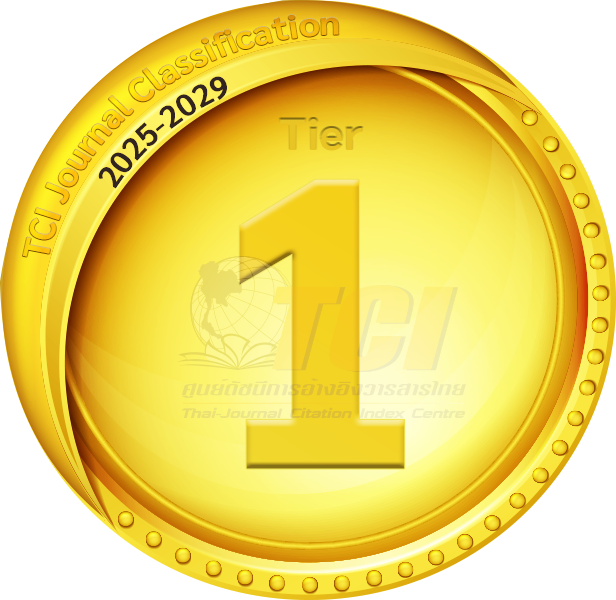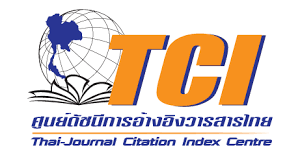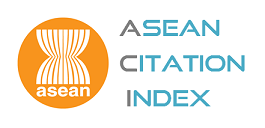Electronic Payment System: Types, Trends, and its Impacts on Thai Economy
- Issara Suwanragsa, Martin de Tours School of Management and Economics, Assumption University, Bangkok, Thailand
- Pathathai Sinliamthong, Martin de Tours School of Management and Economics, Assumption University, Bangkok, Thailand , Corresponding author, E-mail: pathathaisnl@msme.au.edu
- Pallapa Srivalosakul, Martin de Tours School of Management and Economics, Assumption University, Bangkok, Thailand
- Nopphon Tangjitprom, College of Innovation, Thammasat University, Bangkok, Thailand
- Chainarin Srinutshasad, Martin de Tours School of Management and Economics, Assumption University, Bangkok, Thailand
Abstract
Electronic Payment helps enhancing economic growth, promoting online trading, decreasing cash holding, and reducing friction in trade transactions, resulting in an increase in private consumption expenditure (PCE) and real gross domestic product (RGDP) in the country. There are various forms of E-payments; however, the examination of each type of E-payments regarding its trends and impacts on the emerging economy is still limited. The present study fills this gap by exploring types, trends, and relationships between E-payments and the impacts on Thai economy. Literature review was employed to explore the characteristics of each type of E-payments. Descriptive statistics was applied to explore the trends of E-payments during 2010-2020. Pearson correlations and regression analysis using Newey-West standard errors were employed to analyze the effects of E-payments growth on PCE growth and RGDP growth in Thailand. The results indicated that E-payments were significantly and positively related to PCE growth and RGDP growth. Payment transactions via Internet/Mobile banking and E-Money increased remarkably, while transactions via ATM cards decreased over time. Transactions via debit cards remained stable, whereas transactions via credit cards showed a slightly increasing trend. Credit cards, Internet/Mobile banking, and E-Money positively and significantly related to PCE growth and RGDP growth, while there were no relationships between ATM cards relating to PCE growth and RGDP growth in Thailand. Overall, a 1% growth in E-payments results in 0.13% growth in PCE and 0.12% growth in RGDP.
Keywords: E-payments, Internet banking, Mobile banking, E-Money, private consumption expenditure growth, economic growth
DOI: 10.14456/rjsh.2022.8
References
Abrazhevich, D. (2001). Classification and characteristics of electronic payment systems. Retrieved March 20, 2021, from https://link.springer.com/chapter/10.1007/3-540-44700-8_8
Aldaas, A. (2021). A study on electronic payments and economic growth: global evidences. Accounting, 7(2), 409-414.
Asokan, N., Janson, P., Steiner, M., & Waidner, M. (2000). State of the art in electronic payment systems. Advances in Computers, 53, 425-449.
Bank of Thailand Notification. (2018). No. SorNorChor. 12/2561 Re: Services related to debt cards issued and used domestically, Retrieved April 10, 2021, from https://www.bot.or.th/Thai/FIPCS/Documents/FPG/2561/EngPDF/25610094.pdf
Bank of Thailand, BOT (2008). Royal degree regulating on electronic payment services B.E. 2551 regulation on E-payment (2008), Retrieved April 8, 2021, from https://www.bot.or.th/English/AboutBOT/LawsAndRegulations/SiteAssets/e_payment.pdf
Bank of Thailand, BOT (2021). Payment system statistics, retrieved from https://www.bot.or.th/English/Statistics/PaymentSystems/Pages/StatPaymentTransactions.aspx
Davit, N. (2017). Electronic money as economic growth factor. Retrieved April 20, 2021, from https://cyberleninka.ru/article/n/electronic-money-as-economic-growth-factor/pdf.
Deloitte LLP (2013). The economic impact of online payments: breaking barriers across Europe. Retrieved March 19, 2021, from https://www2.deloitte.com/content/dam/Deloitte/uk/Documents/about-deloitte/deloitte-uk-economic-impact-of-online-payments-tmt.pdf
Gupta, S., Yadav, A., & Bhardwaj, B. (2020). Comprehensive review of the effects of electronic banking on the performance and profitability in the banking sector. Technology, 11(12), 427-437.
Harper, I., Simes, R., Malam, C. (2006). The Development of Electronic Payments Systems (pp. 25-40). In: Cooper, R., Madden, G., Lloyd, A., Schipp, M. (Eds) The Economics of Online Markets and ICT Networks. Contributions to Economics. Online book: Physica-Verlag HD. Retrieved from. https://doi.org/10.1007/3-7908-1707-4_3
Humphrey, D., Willesson, M., Lindblom, T., & Bergendahl, G. (2003). What does it cost to make a payment?. Review of Network Economics, 2(2), 159-174.
J. P. Morgan. (2019). E-commerce payments trend: Thailand. Retrieved April 2, 2021, from https://www.jpmorgan.com/merchant-services/insights/reports/thailand
Koponen, A. (2006). E-commerce, electronic payments. Retrieved April 22, 2021, from http://home.ku.edu.tr/~daksen/mgis410/materials/E-Commerce_Electronic_Payments.pdf
National e-Payment. (2016). National e-Payment is an electronic payment system. Retrieved April 10, 2021, from http://www.epayment.go.th/home/app/
Nzaro, R., & Magidi N. (2014). Assessing the role of electronic payment systems in financial institutions. a case of savings bank in Zimbabwe. Global Journal of Management and Business Research: C Finance, 14(2), 44-49.
Office of the National Economic and Social Development Council (2021) Retrieved April 10, 2021, from https://www.nesdc.go.th/nesdb_en/main.php?filename=national_account
Raja, J., & Seetharaman, A. (1970). E-payments: Problems and Prospects. The Journal of Internet Banking and Commerce, 13(1), 1-17.
Sakanko, M. A., & David, J. (2019). The effect of electronic payment systems on financial performance of microfinance banks in Niger State. Esensi: Jurnal Bisnis dan Manajemen, 9(2), 143-154.
Selfira, Abdillah, G., Harahap, W., Iskandar Muda, I. (2019, July). Future Electronics Payment System Model, Journal of Physics Conference Series, 1230(1), Article No. 012068. doi:10.1088/1742-6596/1230/1/012068.
Siddik, M. N. A., Sun, G., Kabiraj, S., Shanmugan, J., & Yanjuan, C. (2016). Impacts of e-banking on performance of banks in a developing economy: empirical evidence from Bangladesh. Journal of Business Economics and Management, 17(6), 1066-1080.
Slozko, O., & Pelo, A. (2014). The electronic payments as a major factor for further economic development. Economics and Sociology, 7(3), 130-140.
The Nation Thailand. (2021). Thais can go without cash for up to 8 days as digital payment usage rises: visa. Retrieved April 15, 2021, from https://www.nationthailand.com/business/30404110
Torki, L., Rezaei, A., & Razmi, S. (2020). The effects of electronic payment systems on the performance of the financial sector in selected Islamic countries. International Journal of Economics and Politics, 1(1), 117-125.
VISA International Global Insight, Inc., VISA (2003). The Virtuous Circle: Electronic Payments and Economic Growth [White paper]. Retrieved April 10, 2021, from https://silo.tips/download/electronic-payments-and-economic-growth
World Economic Forum. (2018). Addressing E-Payment Challenged in Global E-Commerce. Retrieved March 25, 2021, from https://www.weforum.org/whitepapers/addressing-e-payment-challenges-in-global-e-commerce
Yu, H. C., Hsi, K. H., & Kuo, P. J. (2002). Electronic payment systems: an analysis and comparison of types. Technology in Society, 24(3), 331-347.
Zandi, M., Koropeckyi, S., Singh, V., & Matsiras, P. (2016). The Impact of Electronic Payments on Economic Growth. Moody’s Analytics, Retrieved April 30, 2021, from https://usa.visa.com/content/dam/VCOM/download/visa-everywhere/global-impact/impact-of-electronic-payments-on-economic-growth.pdf
Zandi, M., Singh, V., & Irving, J. (2013). The impact of electronic payments on economic growth: Economic and Consumer Credit Analytics, Moody’s Analytics. Retrieved April 10, 2021, from https://usa.visa.com/dam/VCOM/download/corporate/media/moodys-economy-white-paper-feb-2013.pdf

Indexed in


Search